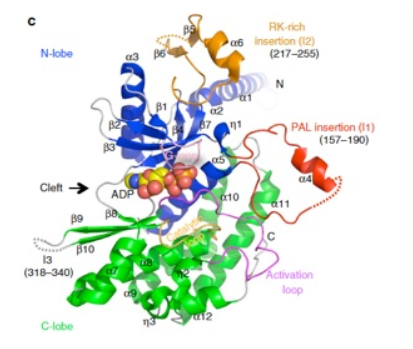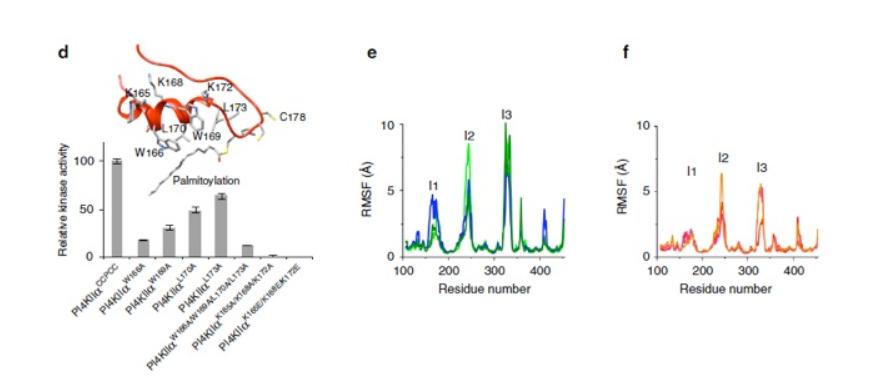Molecular insights into the membrane-associated phosphatidylinositol 4-kinase IIα
(In collaboration with Prof. Chan Cheng from IBP and Prof. Klaus Schulten from University of Illinois at Urbana-Champaign)


Phosphatidylinositol 4-kinase IIα (PI4KIIα), a membrane-associated PI kinase, plays a central role in cell signalling and trafficking. Its kinase activity critically depends on palmitoylation of its cysteine-rich motif (-CCPCC-) and is modulated by the membrane environment. Lack of atomic structure impairs our understanding of the mechanism regulating kinase activity. Here we present the crystal structure of human PI4KIIα in ADP-bound form. The structure identifies the nucleotide-binding pocket that differs notably from that found in PI3Ks. Two structural insertions, a palmitoylation insertion and an RK-rich insertion, endow PI4KIIα with the ‘integral’ membrane-binding feature. Molecular dynamics simulations, biochemical and mutagenesis studies reveal that the palmitoylation insertion, containing an amphipathic helix, contributes to the PI-binding pocket and anchors PI4KIIα to the membrane, suggesting that fluctuation of the palmitoylation insertion affects PI4KIIα’s activity. We conclude from our results that PI4KIIα’s activity is regulated indirectly through changes in the membrane environment.
Reference:
Zhou QJ., Li JM., Yu H., Zhai YJ., Gao Z., Liu YX., Pang XY., Zhang LF., Schulten K., Sun F.* and Chen C.* (2014), Molecular insights into the membrane-associated phosphatidylinositol 4-kinase IIα. Nature Communications,5:3552. doi:10.1038/ncomms4552.
附件下载: